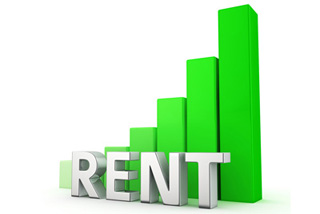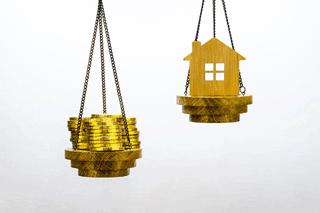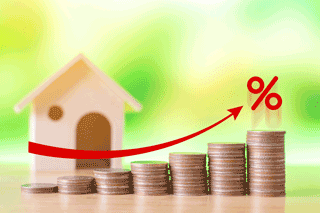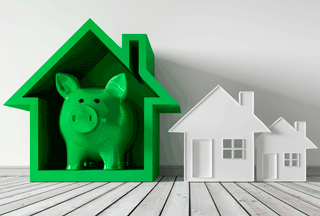Quote Of The Week
“While the small increase in vacancy rates means rental conditions have not deteriorated further, it is still very much a landlord’s market. There are still far more would-be renters than landlords at this stage and that’s why we’re still seeing rents continuing to rise strongly.”
SQM Research managing director Louis Christopher
Vacancy 1.1%, House Rents Jump
 Extremely low vacancy rates continue to push rents higher, with SQM research figures showing the national average is 1.1%.
Extremely low vacancy rates continue to push rents higher, with SQM research figures showing the national average is 1.1%.
SQM Managing director Louis Christopher says the national vacancy rate increased 0.1% in April but remains close to its lowest ever level.
Six of the eight capital cities have vacancy rates well below 1%, with Sydney on 1.6% and Melbourne 1.9%. Hobart and Adelaide have the lowest vacancy rates, with both at 0.4%, while most regional areas are under 1%.
“While the small increase in vacancy rates means rental conditions have not deteriorated further, it is still very much a landlord’s market,” he says. “There are still far more would-be renters than landlords at this stage and that’s why we’re still seeing rents continuing to rise strongly around the country.”
In the past month rents rose by 1.4% following a 2.4% increase in the previous month.
Christopher says in the year to May, Brisbane house rents rose 21%, Sydney 19% and Adelaide 20%.
274 Areas Cheaper To Buy Than Rent
 Rent rises coupled with low interest rates means it is cheaper to buy than rent in many Australian suburbs.
Rent rises coupled with low interest rates means it is cheaper to buy than rent in many Australian suburbs.
CoreLogic figures show monthly mortgage repayments based on a median house or unit price are cheaper than rents in 274 suburbs, 201 of those unit markets and the remainder houses.
There are 20 unit markets and one house market in Sydney where buying is cheaper, while in Melbourne 20 unit markets are cheaper.
A monthly mortgage repayment for a unit in Darwin is $1,013 cheaper than renting. In Western Sydney, buying a unit in Auburn is $318 a month cheaper than renting, while in Rosehill the difference is $266 and in Mays Hill $254.
In the inner Sydney market, buyers pay $203 a month less to buy rather than rent in Roseberry, while in Mascot it’s $190 cheaper.
In Melbourne units in Carlton and Docklands are cheaper by $533 and $422 respectively, while in Perth, Wembley and West Leederville are cheaper by $797 and $785.
Regional Price Growth Outpaces Cities
 Property prices in Regional Australia continue to grow with new figures showing an increase of almost 5% in the April quarter.
Property prices in Regional Australia continue to grow with new figures showing an increase of almost 5% in the April quarter.
This comes on the back of 24% growth in the past 12 months, compared to 15% in the combined capital city markets.
CoreLogic says the Hunter Valley in NSW is the strongest performing market for houses, with its values up 34% in the past 12 months.
The Launceston and North East region of Tasmania is the strongest performing unit market with values up 31% in the past 12 months.
CoreLogic Head of Research Tim Lawless says the continuing out-performance of regional markets is a result of the move to working from home.
He says regional areas are more affordable than capital cities and those who can work at home take advantage of that.
“Although demographic data is significantly lagged, anecdotally we are still seeing strong demand for regional housing supported by high internal migration rates,” he says.
CommBank Tips Smaller Interest Rises
 Interest rates are not likely to increase as much as many analysts are predicting, according to the head of the Commonwealth Bank.
Interest rates are not likely to increase as much as many analysts are predicting, according to the head of the Commonwealth Bank.
Chief executive Matt Comyn says rates will increase but are unlikely to hit the 2.5% increase some are predicting by the end of the year.
Comyn says that would be the fastest pace of rate increase in decades and analysts have gotten well ahead of themselves in predicting what the rate of increase is likely to be.
He predicts a cash rate closer to 1.3% by the end of this year, before moving to a more modest 1.6% mid-next year.
Comyn says the increases will still have a modest impact on the housing market.
“One of the key questions in our mind is: where does the cash rates settle? And I think there’s actually quite a divergence across the market in terms of what the market is pricing for expectations versus what we think is going to occur.”
Homeowners Prepared For Rate Increases
 Even if interest rates continue to rise, most homeowners are well prepared to cope with it according to Bankwest.
Even if interest rates continue to rise, most homeowners are well prepared to cope with it according to Bankwest.
Its customers have nearly tripled the rate of savings in offset accounts over the past two years with 90% of its borrowers ahead on their repayments. Westpac says 72% of its customers are ahead on their mortgages.
General Manager Home Buying Peter Bouhlas says many customers are in a better position than before the pandemic.
Bouhlas says many Australians are facing cost of living pressures, but their figures show plenty of customers have significant savings.
“We’ve seen throughout the pandemic that savings balances were on the rise and many homeowners took advantage of low interest rates to channel those savings into paying down their home loan,” he says.
“That behaviour is likely to prove extremely helpful for those who were able to pay extra off their home loan, as we enter a period of rising inflation and cost of living pressures.”




